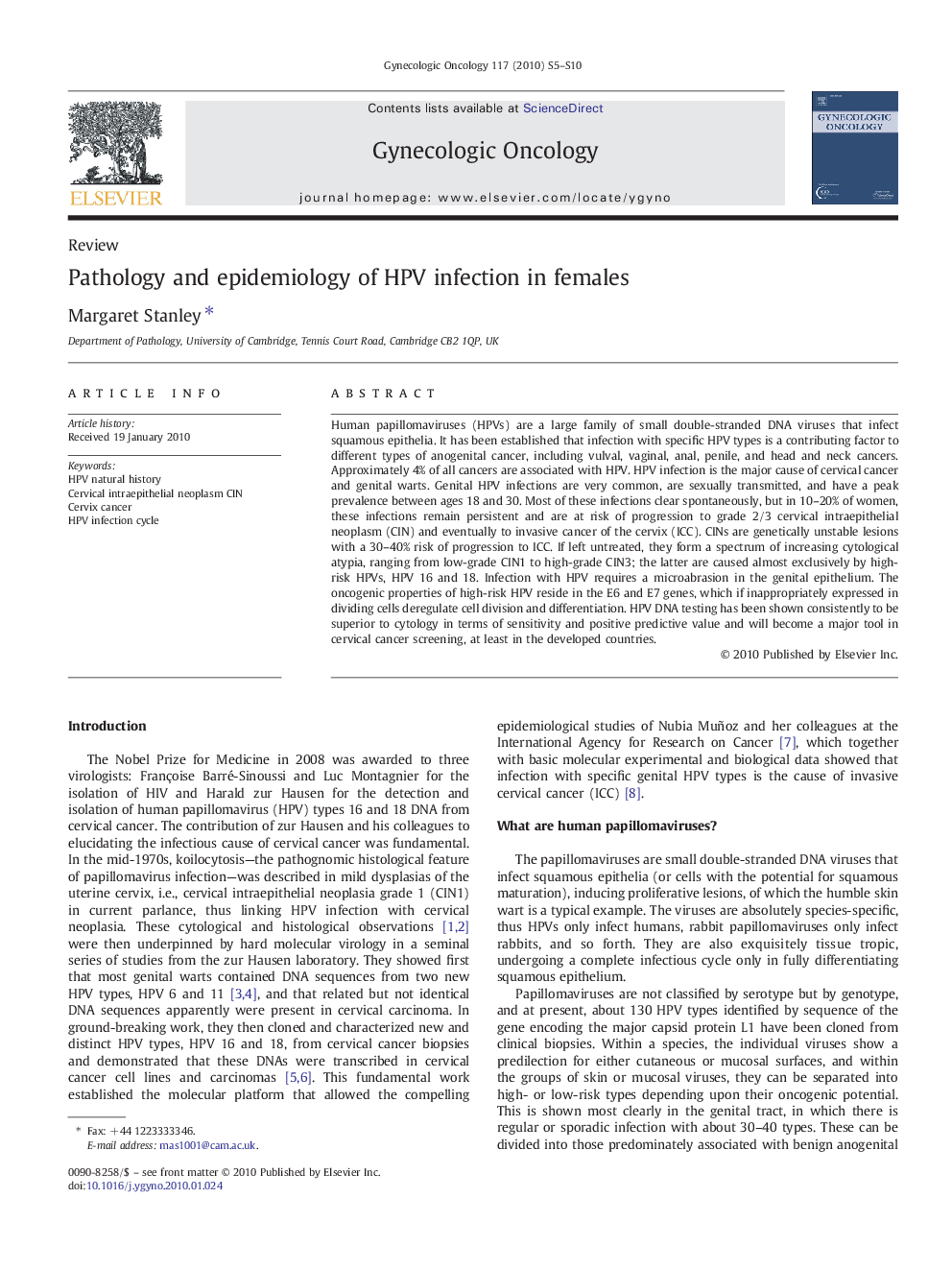| Article ID | Journal | Published Year | Pages | File Type |
|---|---|---|---|---|
| 3943128 | Gynecologic Oncology | 2010 | 6 Pages |
Human papillomaviruses (HPVs) are a large family of small double-stranded DNA viruses that infect squamous epithelia. It has been established that infection with specific HPV types is a contributing factor to different types of anogenital cancer, including vulval, vaginal, anal, penile, and head and neck cancers. Approximately 4% of all cancers are associated with HPV. HPV infection is the major cause of cervical cancer and genital warts. Genital HPV infections are very common, are sexually transmitted, and have a peak prevalence between ages 18 and 30. Most of these infections clear spontaneously, but in 10–20% of women, these infections remain persistent and are at risk of progression to grade 2/3 cervical intraepithelial neoplasm (CIN) and eventually to invasive cancer of the cervix (ICC). CINs are genetically unstable lesions with a 30–40% risk of progression to ICC. If left untreated, they form a spectrum of increasing cytological atypia, ranging from low-grade CIN1 to high-grade CIN3; the latter are caused almost exclusively by high-risk HPVs, HPV 16 and 18. Infection with HPV requires a microabrasion in the genital epithelium. The oncogenic properties of high-risk HPV reside in the E6 and E7 genes, which if inappropriately expressed in dividing cells deregulate cell division and differentiation. HPV DNA testing has been shown consistently to be superior to cytology in terms of sensitivity and positive predictive value and will become a major tool in cervical cancer screening, at least in the developed countries.
